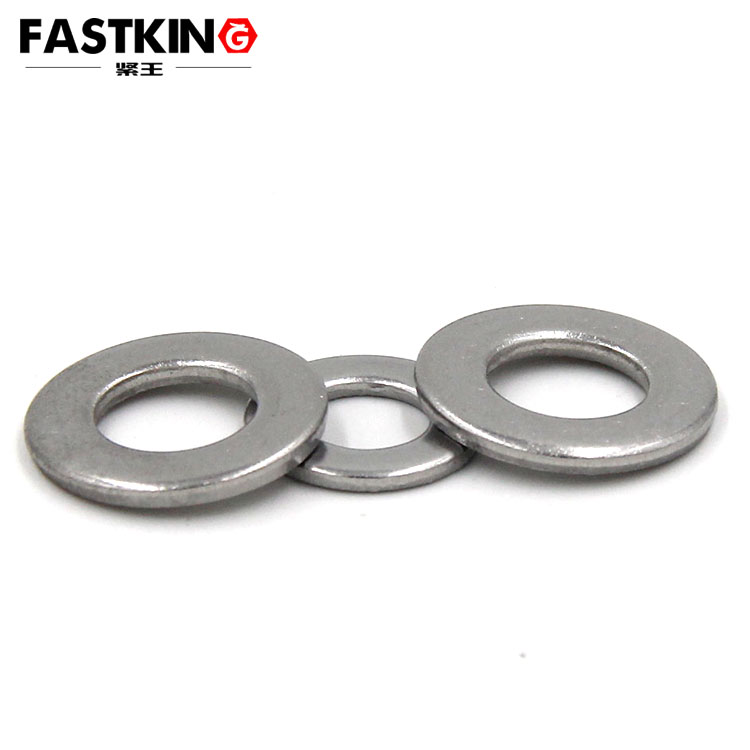The service life of stainless steel washers is affected by various factors. The following are six major influencing factors and methods to extend their service life:
Influencing Factors
- Material: Different types of stainless steel materials have varying properties such as corrosion resistance and strength. For example, 304 stainless steel washers have good corrosion resistance and oxidation resistance and are suitable for general environments. However, 316 stainless steel washers, due to the addition of molybdenum, perform better in terms of corrosion resistance, especially in resisting chloride corrosion, making them suitable for harsh marine environments or high-salinity environments. If the selected stainless steel material does not meet the requirements of the actual application environment, the service life of the washer will be significantly shortened.
- Operating Environment: Factors such as humidity, acidity and alkalinity, and temperature in the environment have a great impact on the service life of stainless steel washers. In a humid environment, stainless steel washers are prone to oxidation and rust. In strong acid and alkali environments, the corrosion resistance of stainless steel washers will be challenged, and phenomena such as corrosion and perforation may occur. High-temperature environments will accelerate the metal fatigue of stainless steel washers, reducing their strength and toughness.
- Load Conditions: The magnitude and nature of the loads such as pressure and tension that the washer bears will also have different impacts on its service life. If the washer is subjected to loads exceeding its bearing capacity for a long time, it will lead to deformation, cracking, and even failure of the washer. For example, in some mechanical connection parts, if the tightening force of the bolt is too large, the washer will bear excessive pressure, thus affecting its service life.
- Installation Method: The correct installation method is crucial for the service life of stainless steel washers. During installation, if the washer is not installed smoothly, is skewed, or there is a gap between it and the connecting part, it will cause uneven stress on the washer and local stress concentration, thereby accelerating the damage of the washer.
- Friction and Wear: The relative movement and friction between the washer and other parts during use will cause surface wear of the washer. Frequent friction will reduce the thickness of the washer and lower the surface finish, which will further affect its sealing performance and bearing capacity, shortening its service life.
- Maintenance and Upkeep: Regular inspection, cleaning, and maintenance of stainless steel washers can help identify potential problems in a timely manner and take corresponding measures, which is conducive to extending their service life. For example, promptly removing dirt, corrosion products, etc. from the surface of the washer can reduce the erosion of these substances on the washer. Appropriate lubrication of the washer can reduce the friction coefficient and wear.

Methods to Extend Service Life
- Select the Appropriate Material: Select the appropriate type of stainless steel material washer according to the operating environment and load requirements. In environments with special requirements, such as high-temperature and strong-corrosion environments, stainless steel materials with corresponding special properties or washers with surface coating treatments can be selected to improve their corrosion resistance and high-temperature resistance.
- Optimize the Operating Environment: Try to avoid exposing stainless steel washers to harsh environments. In a humid environment, moisture-proof measures can be taken, such as using desiccants and increasing ventilation. In environments with a risk of chemical corrosion, protective measures should be taken, such as isolating and protecting the washer or replacing it regularly.
- Reasonably Design the Load: When designing mechanical connections, reasonably determine the tightening force of the bolt and the magnitude of the load according to the bearing capacity of the washer to avoid the washer from bearing excessive pressure or tension. At the same time, consider the fatigue problem of the washer during long-term use and appropriately reduce the load design value to extend the service life of the washer.
- Install the Washer Correctly: During installation, ensure that the washer is installed smoothly, in the correct position, and closely fitted with the connecting part to avoid skewing and gaps. Also, install it according to the specified installation method and sequence, such as using appropriate tools to tighten the bolts to avoid damage to the washer due to improper installation.
- Reduce Friction and Wear: Apply an appropriate amount of lubricant, such as lubricating oil or grease, to the contact surface between the washer and other parts to reduce the friction coefficient and wear. In addition, some structures or materials that reduce friction can be considered in the design, such as adding wear-resistant coatings to the surface of the washer or using self-lubricating materials.
- Regular Maintenance and Inspection: Establish a regular inspection system, and regularly inspect stainless steel washers to observe whether there are corrosion, wear, deformation, etc. on their surfaces. If problems are found, corresponding measures should be taken in a timely manner, such as replacing the washer or treating the corroded part. At the same time, keep the surface of the washer clean and promptly remove dirt and impurities.
